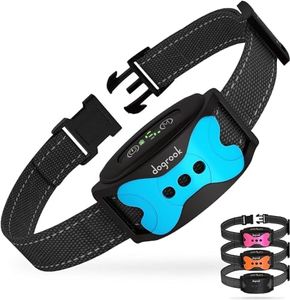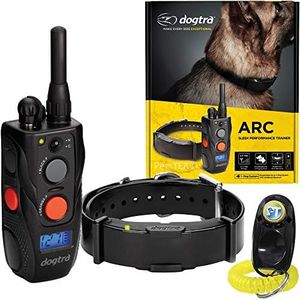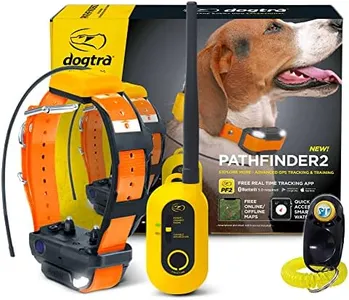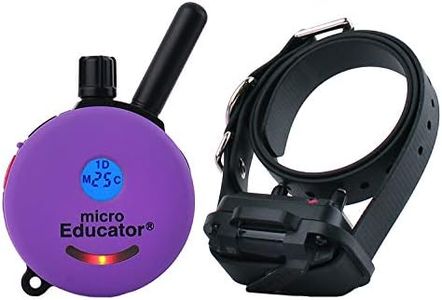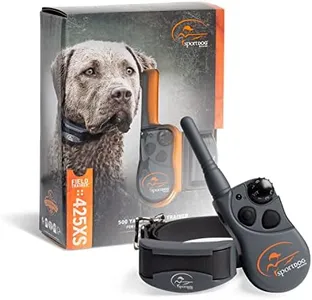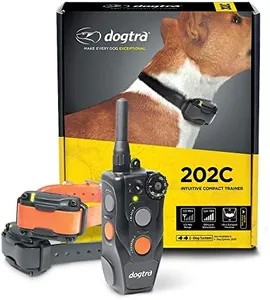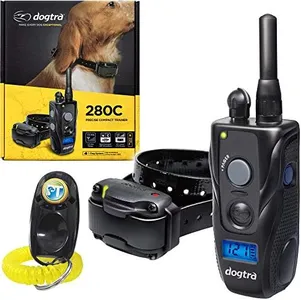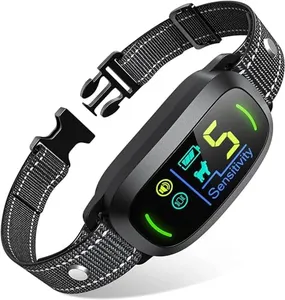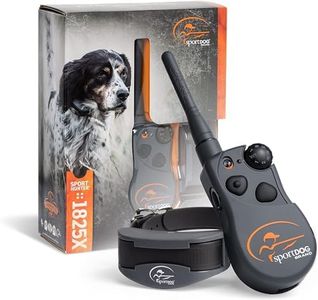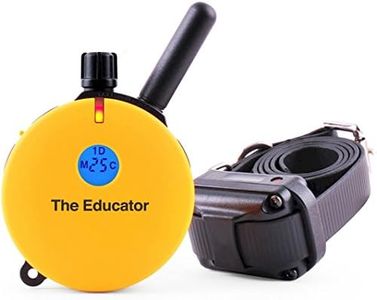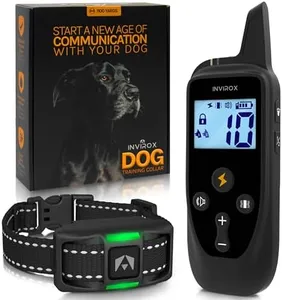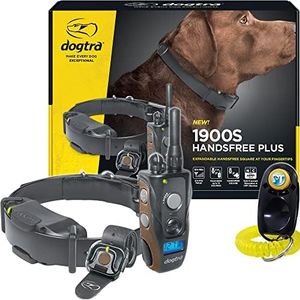We Use CookiesWe use cookies to enhance the security, performance,
functionality and for analytical and promotional activities. By continuing to browse this site you
are agreeing to our privacy policy
10 Best E Collars
From leading brands and best sellers available on the web.Buying Guide for the Best E Collars
E-collars, also known as electronic collars or remote training collars, are tools used primarily in dog training to help guide or manage certain behaviors. When choosing an e-collar, it's important to focus on safety, effectiveness, and your own training comfort. The right e-collar should match your dog’s size, temperament, and the kind of training you have in mind. Before making a decision, understand the key features, and think carefully about your goals. Consulting a professional trainer or veterinarian can also be helpful to make sure your choice is humane and well-suited to your particular pet.RangeRange tells you how far away from your dog you can be while still being able to send a signal to the collar. This is important if you plan to train your dog outdoors or in a large open area, as a longer range allows for more freedom. Short range collars (up to 300 yards) are often enough for backyard or close-proximity training, while medium ranges (up to 800 yards) work well for parks or bigger spaces. Long range collars (up to 1 mile or more) are best for hunting, working dogs, or very large properties. Consider where you’ll be training your dog most often to decide what range you actually need.
Stimulation ModesStimulation modes refer to the different types of signals the collar can deliver, such as static (mild electric pulse), vibration, or tone (beep sound). This is important because some dogs respond better to non-static options, which are generally considered gentler. Most collars let you choose between just one mode or a combination. If you want a less invasive start, look for collars that offer vibration or tone, and keep static as a last resort. Your training style and your dog’s sensitivity should guide you to the mode(s) that feel most comfortable and effective.
Stimulation LevelsStimulation levels determine how strong the feedback from the collar can be. More levels offer finer control, letting you start with the lowest setting and only increase as needed. This is important for customizing the collar to your specific dog’s size and temperament. Collars with fewer levels (such as 5-10) may work for dogs that are less sensitive, while 50 or more levels allow gradual adjustments for dogs who are more sensitive or for precise training. Always start low and observe your dog’s reaction, using the mildest effective setting.
Fit and SizeFit and size means how well the collar matches your pet’s neck and body type. It’s important because an ill-fitting collar will be uncomfortable or may not deliver correct feedback. Collars for small dogs should be lightweight and adjustable for smaller neck sizes, while those for larger breeds need to be sturdier and sized accordingly. Always follow the manufacturer's sizing guide, measure your dog’s neck, and make sure the collar can be worn snugly without pinching or causing sores. Comfort should always be a priority.
Water ResistanceWater resistance (or waterproofing) tells you whether the collar will function properly if it gets wet. This is crucial if your dog spends time outside, especially in rain or near water. Water-resistant collars handle splashes or light rain, suitable for short outings, while waterproof collars can be fully submerged and are better for swimming or frequent outdoor use. Consider your dog’s activities and environment to choose a collar that won’t easily get damaged by moisture.
Battery LifeBattery life shows how long the collar and remote will work between charges. This is important for convenience and uninterrupted training. Short battery life (a few hours) might be enough for very short sessions, but most users prefer collars with rechargeable batteries that can last from several days up to weeks on a single charge. If you plan longer training sessions or a forgetful when it comes to charging, look for options with longer battery life or low-battery warnings.
Safety FeaturesSafety features include things like automatic shut-off, lock prevention, or warning indicators that prevent accidental overstimulation or injury to your dog. This is especially important for user peace of mind and humane treatment of your pet. Look for collars that have automated safety cutoffs after a period of continuous stimulation and check for reliable, easy-to-use controls. Prioritize options that reduce the risk of accidental misuse.
